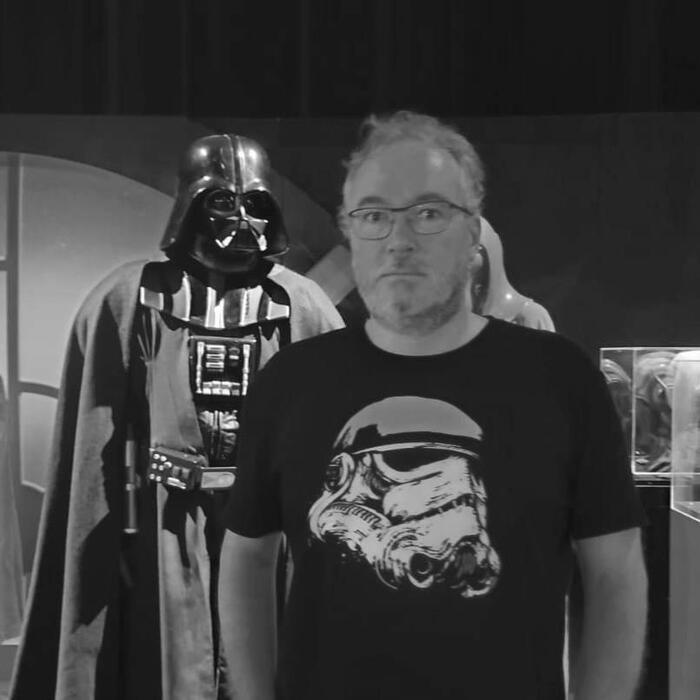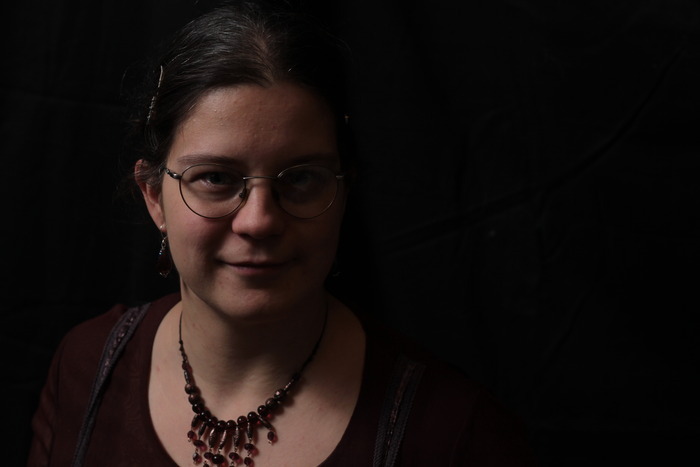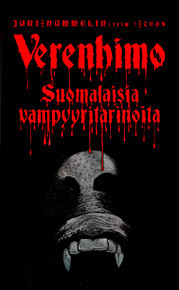
Mitä, Suomessako muka ei ole vampyyreja? Niitähän on tunnetusti vain Transylvanian vuoristossa ja Yhdysvaltain eteläosissa, mutta hyvin niitä mahtuisi piileksimään myös Suomen pimeisiin kuusimetsiin. Vampyyri on myös surullinen, yksinäinen hahmo – mikä vetoaisi suomalaisiin paremmin kuin pimeässä viihtyvä, päivät nukkuva tyyppi, jolla on ongelmia hampaistonsa kanssa? Ainakin vampyyritarinoita täällä osataan kirjoittaa. Sen todistavat Verenhimo-kirjan novellistit, jotka ottavat perinteisen hahmon ja istuttavat sen suomalaiseen maaperään tyylikkäästi ja pelottavasti. Verenhimo päivittää vampyyrimyytin monella eri tavalla: vampyyrit hallitsevat ihmisiä iilimatojen avulla, ottavat osaa seuroihin, ovat kansainvälisten lääketehtaiden koekaniineja, vaanivat ihmisiä sairaalan käytävillä. Mutta lopulta vampyyrikin ottaa ilon irti perinteisestä perjantaipullosta. Monet tarinat ottavat vauhtia myös historiasta – kuka tiesi, millaisia salaisuuksia piilee esimerkiksi Ulrika Eleonoran kirkon rakentamisessa... Verenhimo-teoksen kirjoittajat ovat uuden polven science fiction-, fantasia- ja jännärikirjoittajia, joilla on veri hallussaan. Mukana tarina muun muassa Finlandia-palkitulta Johanna Sinisalolta sekä Runeberg-palkitulta Tiina Raevaaralta. Tarinalistaus: Leinonen, Anne. Surma tuli jään yli Sinisalo, Johanna. Peili Peltoniemi, Sari. Vain mato, matkamies maan Salin, Petri. Isä meidän Soikkeli, M. G. Tuo meille hautavettä jos palaat Waltari, Mika. Muumio Katajala, Jussi. Korpin silmät kaiken näkevät Koskinen, Juha-Pekka. Yövuoro Leppä, Asta. Ystäväni Leo Thorel, Christine. Uhanalaiset Laine, Petri. Keskiyön konsertto D-mollissa Anttila, Leo. Kohtalo Nevala, Heikki. Juotikkaat Saloranta, Tuomas. Minulla on tehtävä Mäki, Harri István. Enkeli tupakkasalongissa Harri Erkki. Himo Karonen, Jarmo. Leimu ja Saarni Supinen, Miina. Kuristajakäärme Tammi, Jari. Pojan rippijuhlat Etelä, Harry. Vampyyrin orja Kita, Rene. Vampyyrin lauantai Raevaara, Tiina. Progress Nummelin, Juri. Vampyyriviihteen historiasta
Authors

Mika Toimi Waltari was a Finnish historical novelist, best known for his magnum opus The Egyptian. Waltari was born in Helsinki and lost his father, a Lutheran pastor, at the age of five. As a boy, he witnessed the Finnish Civil War in Helsinki. Later he enrolled in the University of Helsinki as a theology student, according to his mother's wishes, but soon abandoned theology in favour of philosophy, aesthetics and literature, graduating in 1929. While studying, he contributed to various magazines and wrote poetry and stories, getting his first book published in 1925. In 1927 he went to Paris where he wrote his first major novel Suuri illusioni ('The Grand Illusion'), a story of bohemian life. In terms of style, the novel is considered to be the Finnish equivalent to the works of the American writers of the Lost Generation. (In Waltari's historical novel The Adventurer, taking place in the 16th century, the hero is a Finn who goes to Paris during his twenties and lives there a rather bohemian life). Waltari also was, for a while, a member of the liberal literary movement Tulenkantajat, though his political and social views later turned conservative. He was married in 1931 and had a daughter, Satu, who also became a writer. Throughout the 1930s and 1940s, Waltari worked hectically as a journalist and critic, writing for a number of newspapers and magazines and travelling widely in Europe. He directed the magazine Suomen Kuvalehti. At the same time, he kept writing books in many genres, moving easily from one literary field to another. He had a very busy schedule and strict work ethic. It has been claimed that he also suffered from insomnia and depression, sometimes to the extent of needing hospital treatment. He participated, and often succeeded, in literary competitions to prove the quality of his work to critics. One of these competitions gave rise to one of his most popular characters, Inspector Palmu, a gruff detective of the Helsinki police department, who starred in three mystery novels, all of which were filmed (a fourth one was made without Waltari involved). Waltari also scripted the popular cartoon Kieku ja Kaiku and wrote Aiotko kirjailijaksi, a guidebook for aspiring writers that influenced many younger writers such as Kalle Päätalo. During the Winter War (1939–1940) and the Continuation War (1941–1944), Waltari worked in the government information center, now also placing his literary skills at the service of political propaganda. 1945 saw the publication of Waltari's first and most successful historical novel, The Egyptian. Its theme of the corruption of humanist values in a materialist world seemed curiously topical in the aftermath of World War II, and the book became an international bestseller, serving as the basis of the 1954 Hollywood movie of the same name. Waltari wrote seven more historical novels, placed in various ancient cultures, among which The Dark Angel, set during the Fall of Constantinople in 1453 is probably the best. In these novels, he gave powerful expression to his fundamental pessimism and also, in two novels set in the Roman Empire, to his Christian conviction. After the war, he also wrote several novellas, showing particular mastery in this genre. He became a member of the Finnish Academy in 1957 and received an honorary doctorate at the University of Turku in 1970. Waltari was one of the most prolific Finnish writers. He wrote at least 29 novels, 15 novellas, 6 collections of stories or fairy-tales, 6 collections of poetry and 26 plays, as well as screenplays, radioplays, non-fiction, translations, and hundreds of reviews and articles. He is also the internationally best-known Finnish writer, and his works have been translated into more than 40 languages.

ENG: Johanna Sinisalo is an award-winning Finnish author. She was born in Sodankylä in 1958. During 1984-1997, she worked as a professional designer in advertising, after which she started as a screenwriter and writer. Sinisalo's first novel, Troll, won the Finlandia prize, the most important literature award in Finland. As her hobbies, Sinisalo mentions astronomy, gastronomy, hiking, literature and comics. The author notes that her novels always feature a bit of the small everyday reality. However, overcoming the borders of realism does not mean that the author's works were to be classified as sci-fi or fantasy – from Sinisalo's point of view, categorizing literature by genre should be left behind. FI: Johanna Sinisalo on syntynyt Sodankylässä vuonna 1958. Hän valmistui ylioppilaaksi Tampereella 1977 ja suoritti kandidaatintutkinnon Tampereen yliopiston yleisen kirjallisuustieteen draamalinjalla vuonna 1986. Markkinointi-instituutissa opiskellessaan hän sai vuoden parhaan diplomityön palkinnon 1987. Vuosina 1984–1997 Sinisalo toimi ammatikseen mainonnan suunnittelijana, sittemmin hän ryhtyi vapaaksi käsikirjoittajaksi ja kirjailijaksi. Sinisalon esikoisromaani Ennen päivänlaskua ei voi voitti vuoden 2000 Finlandia-palkinnon. Sittemmin Sinisalo on saanut muun muassa James Tiptree Jr. -palkinnon, Tampereen kaupungin kirjallisuuspalkinnon ja Prometheus-palkinnon. Kirjailijan perheeseen kuuluu avomies ja aikuinen tytär. Harrastuksikseen Sinisalo mainitsee tähtitieteen, gastronomian, vaelluksen, kirjallisuuden ja sarjakuvan. Sinisalo asuu lapsuutensa kotikaupungissa Tampereella. Tärkeitä kirjailijoita Sinisalolle ovat olleet Tove Jansson, Astrid Lindgren, L. M. Montgomery, Ray Bradbury, Volter Kilpi, Vladimir Nabokov, Michel Tournier ja Margaret Atwood. Tieteiskirjallisuuden lukemisen Sinisalo aloitti lapsena Edgar Rice Burroughsin seikkailukirjoilla. Niiden jälkeen hän löysi George Orwellin ja Aldous Huxleyn, joiden teoksissa science fiction on yhteiskunnan havainnoinin ja arvostelun väline. Kirjailija toteaa, että hänen romaaneissaan on aina jokin pieni piirre arkitodellisuuden ulkopuolelta. Sinisalo on useiden muiden tavoin muistuttanut, että puhdas realismi on varsin nuori, 1800-luvun lopulta peräisin oleva kirjallinen suuntaus. Realismin rajojen ylittäminen ei kuitenkaan tarkoita, että kirjailijan teokset olisivat lajityypiltään scifiä tai fantasiaa. Sinisalon mielestä lajityyppiajattelusta pitäisi irtautua. Sinisalo painottaa, että spekulatiivisuus ei ole kirjallisuudessa itseisarvo, vaan että sen kautta voidaan sanoa jotain oleellista jopa paremmin kuin realismin keinoin. Fantasian tai science fictionin kirjoittaminen ei ole päämäärä vaan väline kirjallisuuden tuottamiseen. Sinisalo käyttää sanaa ”viistovalaistus” kuvaamaan tämän välineen toimintaa: todellisuuden tutkiminen uudesta ja ennenkokemattomasta näkökulmasta voi paljastaa uusia puolia, joita ei ole voinut aikaisemmin nähdä.
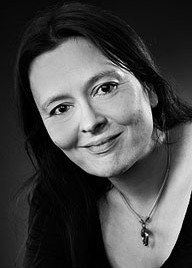
Sari Peltoniemi (born 1963) has published many books for children and young people, whilst her science fiction and fantasy short stories have been published in several magazines. Her novels have twice been shortlisted for the Finlandia Junior Prize (the annual prize for the best Finnish novel for children and young readers). Her fantasy novel Hirvi (Elk) won the Kuvastaja-prize for best Finnish fantasy novel in 2001. In addition to this she has written the lyrics to numerous rock songs. Peltoniemi’s texts often deal with the weakest, most vulnerable members of society, people upon whose lives myth and fantasy begin to enroach. Finnish mythology is especially close to her writing. Peltoniemi´s childrens book Kerppu ja tyttö (Dog and her girl) is published in Japan, Germany and Poland.
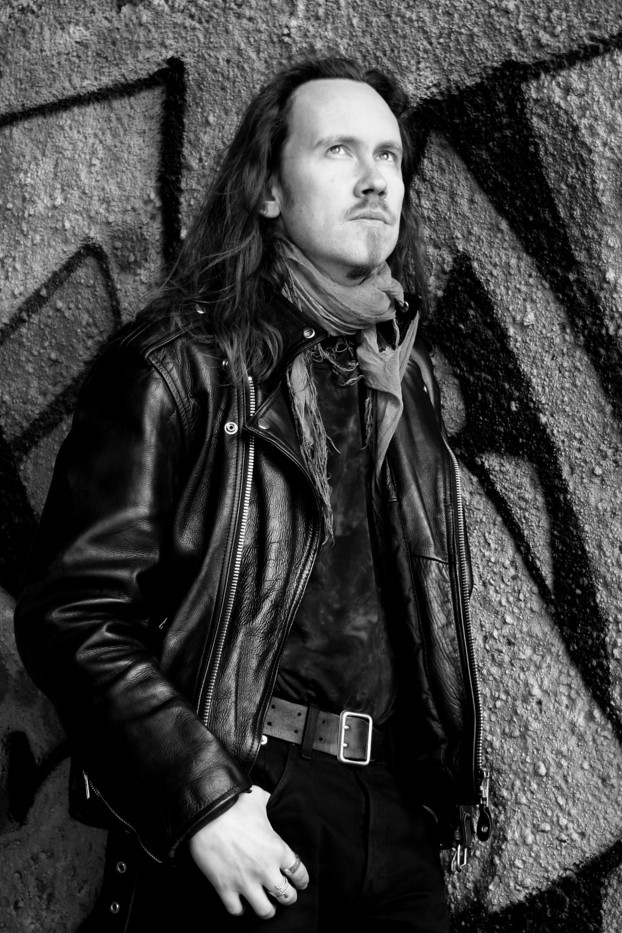
Juha-Pekka Koskinen has published several acclaimed historical novels, short stories collections, books for children and some thirty short stories in various magazines and anthologies. Koskinen’s epic historical novels are a mystical blend of historical fact and fiction. He takes the reader on a journey through history, in the tradition of Bulgakov, Marquez, Eco and Calvino. Koskinen has received grants from Finnish Cultural Foundation and Häme Province Foundation in 2002, 2006, 2007, 2009 and 2012 and won the Karisto Foundation Award in 2005 and 2009.

ENG: Tiina Raevaara is a geneticist and a doctor of philosophy, and the most important things to her are the nature and life in all its shapes. Her interests can be seen as precise portrayals/descriptions in her writings. The author characterizes her style as surrealistic and symbolic, and she has told being fascinated by the fine line between reality and unreality, and that she couldn't even think about writing fiction which lacked the feel of magic - strangeness, miracle, abnormality. Raevaara has, also, stated that she opposes dividing literature into narrow genre-thinking, that each text is to be treated as the individual they are. She describes her writings to be projections of different things that have been recorded and combined in the subconscious. FI: Tiina Raevaara (s. 1979) on koulutukseltaan geneetikko ja filosofian tohtori. Raevaara voitti novellikokoelmallaan En tunne sinua vierelläni vuoden 2011 Runeberg-palkinnon. Hänen novellejaan on julkaistu ja palkittu monissa eri yhteyksissä. Tärkeintä hänelle on luonto ja elämä kaikissa muodoissaan. Raevaara voisi luonnehtia tyyliään surrealismiksi tai symbolismiksi. ”Toden ja epätoden rajapinta kiehtoo minua, enkä voisi kuvitella kirjoittavani fiktiota, josta puuttuu kokonaan taian – outouden, ihmeen, luonnottomuuden – tuntu. En silti osaa kirjoittaa tavoitteellisesti nimenomaan spekulatiivistakaan fiktiota – sen ainekset tulevat kirjoituksiini usein itsellenikin yllätyksenä. Kuulun niihin ihmisiin, jotka kavahtavat kirjallisuuden jakoa ahtaisiin lajityyppeihin: jokainen teksti on yksilö ja tulkoon kohdelluksi sellaisena!”, Raevaara kertoo Usva-lehdessä. Raevaaran kiinnostus luontoa ja eläimiä kohtaan näkyy hänen kertomuksissaan tarkkoina yksityiskohtina luonnosta. Tämä on lähtökohtana novellissa ”Sääkset”, josta Raevaara sai vuonna 2006 Martti Joenpolven palkinnon. Raevaara kuvaa kirjoittavansa yhdistelmiä eri asioista, joita hänen muistiinsa on tallentunut. Kun alitajunnassa yhdistyneille asioille pyrkii löytämään hahmon kirjoittamalla, voi yllättää itsensäkin. ”Kirjoittaminen on ajatusten säilömistä aivojen ulkopuolelle. Lukeminen on vieraiden ajatusten invaasiota. Kirjallisuus on ajatustensiirtoa.”
